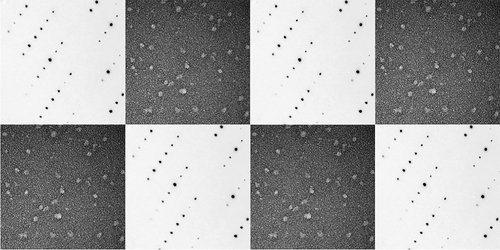当前位置:
X-MOL 学术
›
Biochemistry
›
论文详情
Our official English website, www.x-mol.net, welcomes your feedback! (Note: you will need to create a separate account there.)
X-rays in the Cryo-Electron Microscopy Era: Structural Biology’s Dynamic Future
Biochemistry ( IF 2.9 ) Pub Date : 2018-01-11 00:00:00 , DOI: 10.1021/acs.biochem.7b01031 Susannah C. Shoemaker 1 , Nozomi Ando 1
Biochemistry ( IF 2.9 ) Pub Date : 2018-01-11 00:00:00 , DOI: 10.1021/acs.biochem.7b01031 Susannah C. Shoemaker 1 , Nozomi Ando 1
Affiliation

|
Over the past several years, single-particle cryo-electron microscopy (cryo-EM) has emerged as a leading method for elucidating macromolecular structures at near-atomic resolution, rivaling even the established technique of X-ray crystallography. Cryo-EM is now able to probe proteins as small as hemoglobin (64 kDa) while avoiding the crystallization bottleneck entirely. The remarkable success of cryo-EM has called into question the continuing relevance of X-ray methods, particularly crystallography. To say that the future of structural biology is either cryo-EM or crystallography, however, would be misguided. Crystallography remains better suited to yield precise atomic coordinates of macromolecules under a few hundred kilodaltons in size, while the ability to probe larger, potentially more disordered assemblies is a distinct advantage of cryo-EM. Likewise, crystallography is better equipped to provide high-resolution dynamic information as a function of time, temperature, pressure, and other perturbations, whereas cryo-EM offers increasing insight into conformational and energy landscapes, particularly as algorithms to deconvolute conformational heterogeneity become more advanced. Ultimately, the future of both techniques depends on how their individual strengths are utilized to tackle questions at the frontiers of structural biology. Structure determination is just one piece of a much larger puzzle: a central challenge of modern structural biology is to relate structural information to biological function. In this perspective, we share insight from several leaders in the field and examine the unique and complementary ways in which X-ray methods and cryo-EM can shape the future of structural biology.
中文翻译:

低温电子显微镜时代的X射线:结构生物学的动态未来
在过去的几年中,单粒子冷冻电子显微镜(cryo-EM)成为阐明近原子分辨率的大分子结构的主要方法,甚至可以与X射线晶体学的既定技术相媲美。Cryo-EM现在能够探测到最小为血红蛋白(64 kDa)的蛋白质,同时完全避免了结晶瓶颈。cryo-EM的巨大成功使人们对X射线方法(尤其是晶体学)的持续相关性提出了质疑。说结构生物学的未来是低温电磁法或晶体学,将被误导。晶体学仍然更适合于产生大小小于几百道尔顿的大分子的精确原子坐标,而探测更大,可能更无序的装配体的能力是cryo-EM的显着优势。同样,晶体学可以更好地提供随时间,温度,压力和其他微扰而变化的高分辨率动态信息,而cryo-EM可以使人们进一步了解构象和能量态势,尤其是当解卷积构象异质性的算法变得更加先进时。最终,这两种技术的未来取决于如何利用其各自的优势来解决结构生物学前沿的问题。结构确定只是一个更大的难题中的一个:现代结构生物学的一个主要挑战是将结构信息与生物学功能联系起来。从这个角度来看,
更新日期:2018-01-11
中文翻译:

低温电子显微镜时代的X射线:结构生物学的动态未来
在过去的几年中,单粒子冷冻电子显微镜(cryo-EM)成为阐明近原子分辨率的大分子结构的主要方法,甚至可以与X射线晶体学的既定技术相媲美。Cryo-EM现在能够探测到最小为血红蛋白(64 kDa)的蛋白质,同时完全避免了结晶瓶颈。cryo-EM的巨大成功使人们对X射线方法(尤其是晶体学)的持续相关性提出了质疑。说结构生物学的未来是低温电磁法或晶体学,将被误导。晶体学仍然更适合于产生大小小于几百道尔顿的大分子的精确原子坐标,而探测更大,可能更无序的装配体的能力是cryo-EM的显着优势。同样,晶体学可以更好地提供随时间,温度,压力和其他微扰而变化的高分辨率动态信息,而cryo-EM可以使人们进一步了解构象和能量态势,尤其是当解卷积构象异质性的算法变得更加先进时。最终,这两种技术的未来取决于如何利用其各自的优势来解决结构生物学前沿的问题。结构确定只是一个更大的难题中的一个:现代结构生物学的一个主要挑战是将结构信息与生物学功能联系起来。从这个角度来看,



























 京公网安备 11010802027423号
京公网安备 11010802027423号